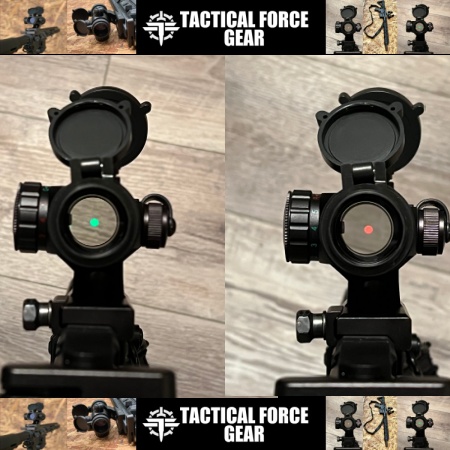After extensive training and testing with six shelter dogs in laboratory and field settings, researchers have found that dogs are highly accurate at detecting chronic wasting disease in both farmed and wild whitetail deer. These findings, which were published in the PLOS One journal on Aug. 7, may help wildlife and livestock managers detect and contain CWD, the fatal prion disease that infects deer, elk, and other cervids across North America.
Testing for CWD has always been riddled with logistical challenges. That includes everything from screening live animals to teaching hunters how to extract lymph nodes from their deer. So Glen Golden, one of the lead researchers on this study, and his colleagues obtained hundreds of fecal samples from both farmed whitetail deer and deer killed by hunters in Western Tennessee. They also received gastrointestinal tissue samples from Tennessee whitetails. Refer to the full study for the exact testing protocol and accuracy for each set of trials, but here’s the layman’s version.
Courtesy of Glen Golden
During laboratory trials, dogs were presented with five total fecal samples in boxes: one was CWD-positive while the other four were negative for CWD. The researchers would walk the dogs down the line of boxes and if the dog detected CWD, it would sit. Random chance in this scenario is one in five, or 20 percent. During testing with rewards like treats or toys, the dogs were 90 percent accurate at identifying the CWD-positive sample.
To be clear, the dogs aren’t actually sniffing out the malformed prions that are responsible for CWD. Instead, pups are trained to single out the odor of a specific metabolic change that occurs in whitetails infected with CWD.
“If you can imagine an odor profile, it’s kind of like a barcode,” says Golden. “That’s how busy it is. And you’re asking the dogs to pick out one line in a bar code and focus on that. That takes a bit of work but once you get them focused on that,” they’re highly accurate.
After the dogs proved they could identify CWD in deer poop, researchers presented them with deer guts. In one component of this experiment, researchers conducted 419 reward testing trials with whitetail colon samples; the dogs correctly identified CWD infection with 96 percent accuracy.
“We used those [GI tracts] to try to prove that dogs could transition from fecal samples to whole tissue samples,” says Golden, who is hopeful the study can be expanded for real world applications. For instance, “a lot of times you’re collecting just deer heads [from deposit boxes or at check-ins] and you could line those heads up like suitcases at the airport and just bring the dogs down that line and have them report on each particular sample.”

Photo courtesy of Glen Golden
Although the full field research research component of this study was cut short, Golden is also hopeful future research will unlock methods for detecting CWD in the environment.
“We were supposedly working on environmental contamination [in Tennessee], mainly where deer congregate at historical salt licks or historical bait stations,” says Golden. “[What if we could find] where the chronic wasting disease was lying on the soil. The next question I had was, what if there’s a microbiome in the soil just like there is in the gut? What if the prions interact with that microbiome and [emit] a different microbiome that [the dogs can detect]?”
Selecting Dogs for CWD Detection
Interestingly, the CWD-detection dogs in this study weren’t hand-picked for their reputations as scenthounds. Healthy dogs and other mammals in general are “still much more sensitive in odor detection than any machine we have yet,” says Golden. So instead of seeking out purebred bloodhounds, Golden hand-picked dogs from animal shelters.

Photo courtesy of Glen Golden
“I don’t believe that there’s any difference between a Lab or a Pekingese in terms of olfactory acuity,” says Golden. “The thing that does limit dogs in their ability to perform at these tasks are physiological makeup. I have some boxers that would be amazing at [scent detection] but they’d last 10 seconds … because they can’t handle heat and humidity. The dogs I mainly look for are dogs that are driven by scent. I wouldn’t pick a sight hound like an Afghan. We’re looking for high-arousal, high-prey-drive dogs that need to be stimulated constantly. We’re picking the dogs that … no one else would want to try to handle.”
Read Next: Are Chronic Wasting Disease Fears Making People Quit Deer Hunting?
The final lineup of working dogs for the study included a black and tan coonhound, two Lab-Collie mixes, and a Catahoula, among others.
How Soon Will We See Dogs at Deer-Check Stations?
Now that there’s solid research showing dogs can identify samples from CWD-infected whitetails, deer managers are eager to add dogs to their containment strategies.
“A lot of cervid farmers have contacted me and suggested that they’d love to have a [CWD-detection] dog on their property,” says Golden. “We have a tool now that could be used. But whoever is doing it is going to have to spend some money, and they’re going to need some samples to test dogs.”
One consideration with training dogs to detect CWD is biosecurity. While chemists have been able to replicate odor profiles for avian influenza, there’s not currently a chemical alternative for the odor profile of a CWD-positive deer. In other words, it’s not feasible to sell vials containing samples from CWD-positive deer to just anyone.

“It really would be better if we had a chemical substitute [for training] but that’s not always going to be possible” with every disease, says Golden, who has previously trained dogs and ferrets to detect avian influenza. “That’s one of the bumps we have to work out so that anybody training a dog could figure out how to get this done.”
Read Next: Chronic Wasting Disease Has Been Detected in Yellowstone. That Could Be a Good Thing
But once a few of these logistical challenges are resolved by anyone or any agency willing to tackle them, there’s hope for improving CWD detection in the field and beyond.
“There’s a very achievable bridge [from this study] to practical applications at hunting check-in stations,” says Golden. “It just needs financial support.”
Read the full article here




